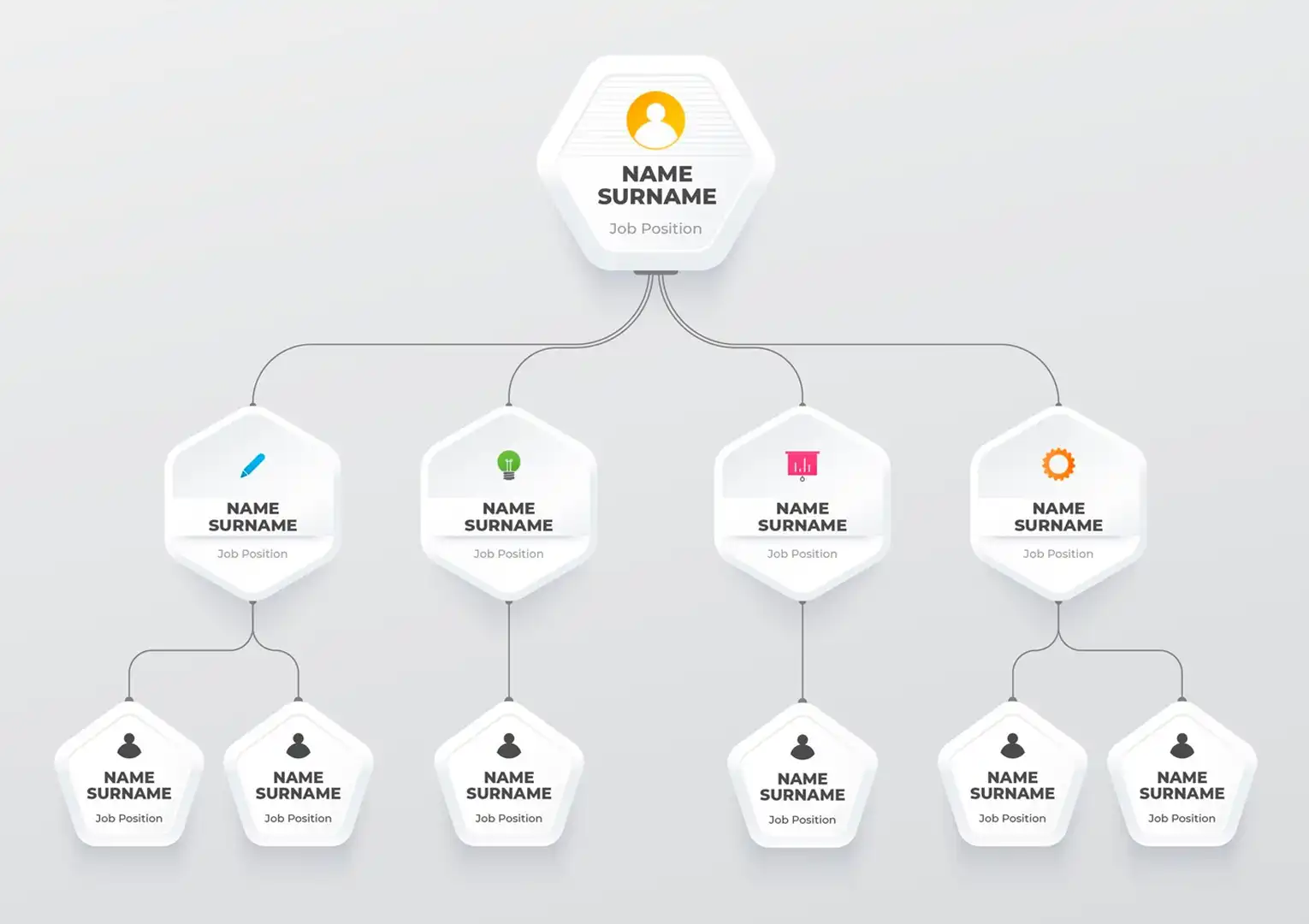Company Organizational Structure Examples and Their Business Benefits
April 15, 2025
Share This Article

To boost efficiency, businesses need to adopt an organizational structure that aligns with their operational needs. In this article, Labamu will guide you through the definition of organizational structure, its various types, and the benefits it brings to your business. Let’s dive in!
Pengertian Struktur Company Organization
According to Whatfix, an organizational structure is a hierarchical system that outlines the positions, roles, and relationships of each employee within a business. It also illustrates how a business operates and is organized.
With a clear organizational structure, every team member understands their responsibilities and knows who they report to. This not only enhances operational efficiency but also provides clarity for every employee and business unit.
Organizational structures are typically visualized through charts, where the most “powerful” members of the organization are placed at the top, and those with less authority are positioned below.
Elements in Organizational Structure Design
A company’s organizational structure is more than just a visual chart—it symbolically represents many important aspects of the business. Here are the key elements typically illustrated within it:
Job Specialization
Job specialization defines how responsibilities are divided among employees based on their job descriptions. It helps break down projects into smaller, more manageable tasks that each employee can easily understand and perform.
Departmentalization
Departmentalization groups employees based on job descriptions, skill sets, locations, or other connecting factors. In some cases, companies may not divide staff strictly by functional departments, but instead group them according to other relevant factors.
Chain of Command
The chain of command outlines the flow of instructions and reporting lines within the organization. While many modern companies now strive to increase employee autonomy, the chain of command still plays a crucial role in reducing micromanagement and clarifying authority.
Span of Control
Span of control refers to the number of direct reports a supervisor manages. Determining the right span of control requires assessing the leader’s capacity, workplace size, and the experience level of employees.
Formalization
Formalization determines the extent to which business processes, policies, and job roles are standardized. It also includes unwritten rules that influence communication patterns between employees and managers, workplace culture, operating procedures, and more.
Types and Examples of Company Organizational Structures
There are many types and examples of organizational structures that businesses can apply. However, in this article, Labamu will focus on the seven most commonly used types of organizational structures.
Functional Structure
The functional structure groups employees into different departments based on their job specialization. Each department has a designated leader who manages the team.
Divisional Structure
In a divisional structure, a company is divided into several business units, each having full control over its own budget, resources, and strategies. This structure is commonly used by large corporations with multiple product lines, operations across various geographical regions, multiple market segments, and industries.
Matrix Structure
In a matrix structure, team members report to multiple managers at the same time. This enables broader collaboration and faster project completion. However, companies using this structure must find ways to avoid authority confusion and prevent conflicts between managers.
Team-Based Structure
A team-based structure creates small teams focused on specific products or projects. Team members are responsible for managing their own workload and have full control over the project.
Process-Based Structure
This structure is organized around the company’s workflows rather than traditional departments or functions. Employees are grouped based on specific processes. It is commonly adopted in the manufacturing industry.
Network Structure
This type of structure goes beyond internal hierarchies by combining two or more organizations to deliver a single product or service. It is often used by companies that outsource freelancers, contractors, or independent vendors to get the work done.
Flatarchy Structure
A flatarchy structure is typically used by small businesses and startups. There are few middle managers between employees and top-level managers. However, most companies that adopt this structure eventually shift to another type of organizational structure as they mature.
The Benefits of Choosing the Right Organizational Structure
Here are several benefits companies can gain by implementing the right organizational structure:
Faster Decision-Making
An appropriate organizational structure facilitates efficient information flow and better communication, leading to quicker and more effective decision-making.
Improved Operational Efficiency
An efficient structure makes it easier to manage tasks and responsibilities effectively. When employees clearly understand their roles, they can work faster and help improve the company’s overall operations.
Enhanced Employee Performance
When employees are assigned specific tasks and responsibilities, they are better prepared to excel in their roles. A well-structured organization provides the necessary guidance for employees to consistently perform at their best.
Eliminates Task Duplication
Grouping employees based on their skills and expertise helps reduce overlapping tasks. Team members have a clear understanding of what they’re responsible for—and what they’re not.
Reduces Employee Conflict
When each team member has a clear grasp of their role and responsibilities, they can focus on their tasks—minimizing distractions and misunderstandings. This clarity encourages a harmonious work environment and prevents potential conflicts among coworkers.
Promotes Better Communication
Clearly defined responsibilities help employees know exactly who to contact regarding specific issues. This leads to more efficient communication and collaboration across the organization.
Maintains Consistency Across Business Locations
For business owners, implementing an organizational structure helps maintain consistency across multiple locations or business units. It ensures that everyone follows the same procedures—even when the owner cannot personally supervise every site.
That wraps up our discussion on examples of organizational structures.If you’re a business owner considering applying one to your company, make sure it fits your operational needs and business type.
We hope you found this helpful—and don’t forget to download the Labamu app on Google Play or the App Store to improve your business efficiency!














